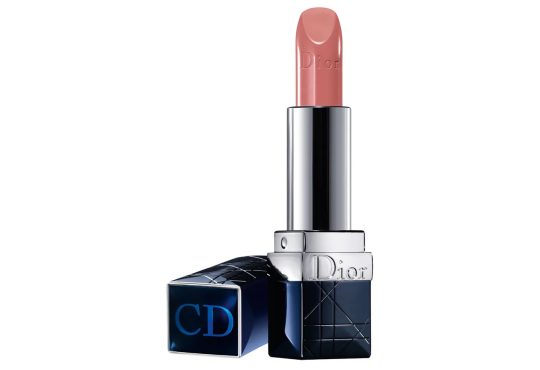
How Often You Should Exfoliate Your Face
Exfoliation is a crucial step in any skincare routine, helping to remove dead skin cells, unclog pores, and reveal smoother, brighter skin underneath. By sloughing away dull, dry skin, exfoliation can improve the effectiveness of skincare products, promote cell turnover, and prevent breakouts. However, exfoliating too often or too aggressively can damage the skin’s protective barrier and lead to irritation, inflammation, and sensitivity. Finding the right balance and frequency of exfoliation is key to achieving healthy, glowing skin without compromising its integrity.
Determining Your Skin Type and Needs
When it comes to exfoliation, there is no one-size-fits-all approach—what works for one person may not work for another. The frequency of exfoliation depends on various factors, including your skin type, age, lifestyle, and the type of exfoliant you’re using. For example, those with oily or acne-prone skin may benefit from more frequent exfoliation to help control excess oil and prevent breakouts, while those with sensitive or dry skin may need to exfoliate less frequently to avoid irritation and dryness.
Understanding Your Options
There are two main types of exfoliants: physical exfoliants, which use abrasive particles to manually slough away dead skin cells, and chemical exfoliants, which use acids or enzymes to dissolve and loosen the bonds between skin cells. Physical exfoliants include scrubs, brushes, and exfoliating tools, while chemical exfoliants include alpha hydroxy acids (AHAs) like glycolic acid and lactic acid, beta hydroxy acids (BHAs) like salicylic acid, and enzymes like papain and bromelain. Each type of exfoliant has its own benefits and considerations, so it’s essential to choose the right one for your skin type and needs.
Is It Too Much of a Good Thing?
While the idea of exfoliating every day may sound appealing, especially if you’re eager to achieve smoother, brighter skin, daily exfoliation is not recommended for most people. Over-exfoliating can strip the skin of its natural oils, disrupt its moisture barrier, and cause irritation, redness, and sensitivity. Additionally, daily exfoliation can increase the risk of sun damage and compromise the skin’s ability to repair and regenerate itself. Instead of exfoliating every day, it’s generally best to start with a more conservative approach and gradually increase the frequency based on your skin’s response.
Striking the Right Balance
For many people, exfoliating 1-3 times per week is sufficient to maintain healthy, radiant skin without overdoing it. This frequency allows enough time for the skin to recover between exfoliation sessions and minimize the risk of irritation or damage. However, the ideal frequency of exfoliation can vary depending on individual factors such as skin type, age, and tolerance. It’s essential to pay attention to how your skin responds to exfoliation and adjust your routine accordingly. If you notice any signs of irritation or sensitivity, scale back on the frequency or intensity of exfoliation.
A Gentle Approach for Sensitive Skin
For those with sensitive skin or conditions like rosacea or eczema, monthly exfoliation may be more appropriate to avoid exacerbating inflammation or irritation. Gentle exfoliation with mild, non-abrasive exfoliants and minimal friction can help to remove dead skin cells and promote cell turnover without causing undue stress or damage to the skin barrier. It’s essential to choose gentle exfoliants specifically formulated for sensitive skin and to patch test new products before applying them to the entire face.
The Importance of Observation and Adaptation
Ultimately, the best guide for how often you should exfoliate your face is your own skin. Pay attention to how your skin looks and feels after exfoliation—does it appear brighter, smoother, and more radiant, or does it feel tight, irritated, or inflamed? If you experience any negative reactions or changes in your skin’s appearance, it’s essential to adjust your exfoliation routine accordingly. Remember that less is often more when it comes to exfoliation, and erring on the side of caution can help to protect your skin’s health and integrity in the long run.
Seeking Expert Advice
If you’re unsure about how often you should exfoliate or which exfoliants are best suited to your skin type and concerns, don’t hesitate to seek advice from a dermatologist or skincare professional. They can assess your skin’s needs, recommend appropriate products and treatments, and provide personalized guidance to help you achieve your skincare goals safely and effectively. By working with a knowledgeable professional, you can develop a tailored exfoliation routine that promotes healthy, glowing skin and addresses any specific concerns or issues you may have.
Navigating the Frequency of Facial Exfoliation for Radiant Skin
In conclusion, finding the right balance and frequency of exfoliation is essential for maintaining healthy, radiant skin without causing irritation or damage. By considering factors such as your skin type, age, and sensitivity, choosing appropriate exfoliants, and listening to your skin’s feedback, you can develop a personalized exfoliation routine that meets your skincare needs and goals. Whether you exfoliate weekly, monthly, or somewhere in between, the key is to approach exfoliation with care, patience, and attention to your skin’s unique needs and preferences.



